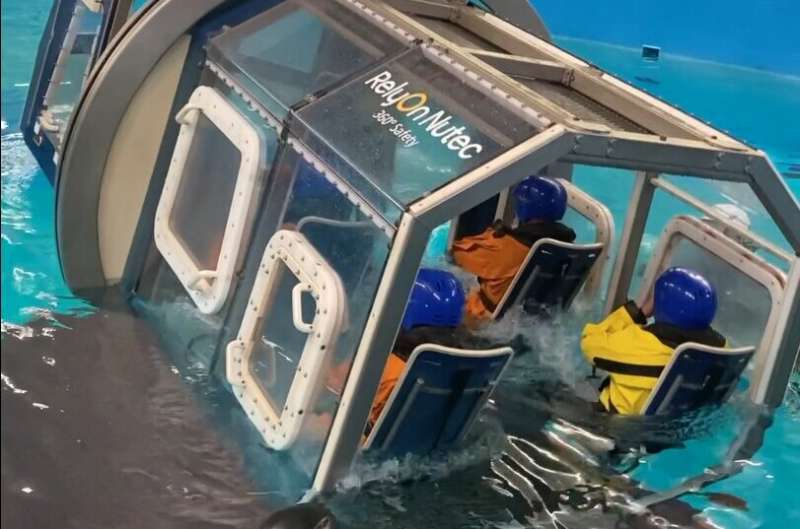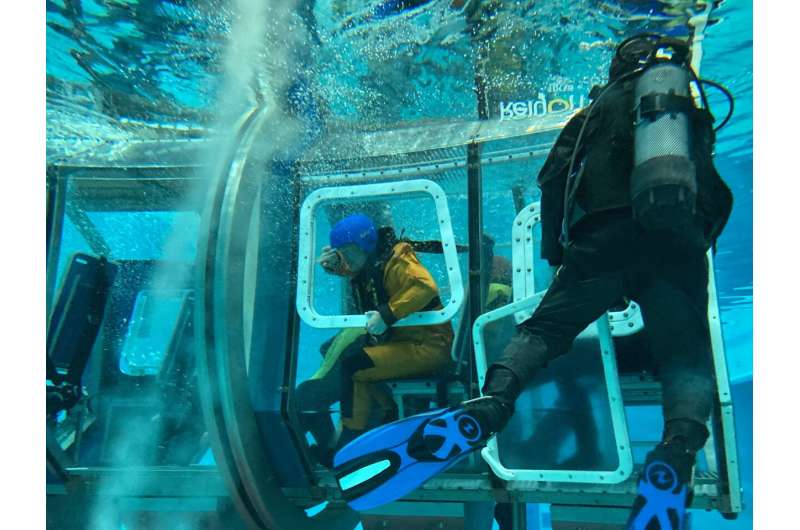Helicopter underwater escape training for ESA’s astronaut support team

Last week, members of ESA’s astronaut support teams participated in a helicopter underwater escape training. This training is mandatory for people involved in astronaut landing operations, including flight surgeons and photographers, who capture the key moments of an astronaut mission.
With European astronauts now launching and landing from NASA’s Kennedy Space Center in Florida, splashdowns after a spaceflight off the coast of Florida have become the norm. As ESA personnel are present when European astronauts launch and splashdown they too have to undergo helicopter rescue and water evacuation training.
Held for the first time in Europe, the training took place in Rotterdam, Netherlands, tailored to ESA’s needs. The course taught participants helicopter flight procedures, and ensured crew is prepared for any emergencies.
Dry and wet
The course lasts for a full day, divided into theoretical and practical components. Trainees spend half a day in the classroom to learn procedures, what to do during a helicopter ditching, and using compressed air emergency breathing systems.
The second half of the day is dedicated to the practical part of the underwater escape training, which grows in intensity after the first introduction to the water. On the first round, a helicopter replica is gently submerged into the water and then increasing speed and even adding rotations on next attempts.

Once escaping from a submerged helicopter, participants receive training on further survival techniques such as boarding a life raft and mitigating the risk of hypothermia.
A successful certification for helicopter emergency water landings is valid for two years.
Ready for splashdown
The next helicopter mission for the ESA team is set for the launch and landing of Andreas Mogensen during his Huginn mission later this summer.
In case of a launch abort, a flight surgeon and the head of astronaut operations, currently ESA astronaut Alexander Gerst, are on standby for a helicopter rescue mission.
On a spacecraft splashdown two helicopters monitor operations and provide emergency support. One helicopter transports astronauts from the recovery ship back to land and can accommodate up to 14 people, including astronauts and medical support personnel. A second helicopter carries crew support personnel, photographers, and space agency representatives.
Citation:
Helicopter underwater escape training for ESA’s astronaut support team (2023, July 6)
retrieved 7 July 2023
from https://phys.org/news/2023-07-helicopter-underwater-esa-astronaut-team.html
This document is subject to copyright. Apart from any fair dealing for the purpose of private study or research, no
part may be reproduced without the written permission. The content is provided for information purposes only.
For all the latest Science News Click Here
For the latest news and updates, follow us on Google News.

